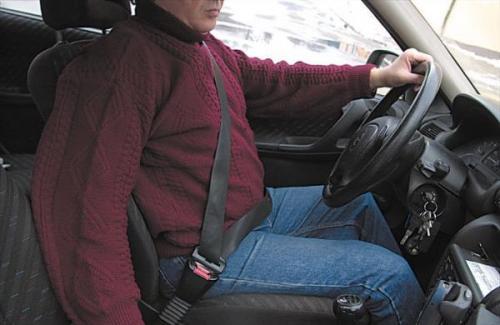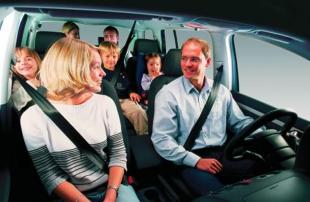
How to get out of an accident?
 We often do not know how to use the devices that are equipped with ever safer cars. Up to 80 percent of accidents occur at seemingly low speeds of 40-50 km/h. They can also cause serious injury.
We often do not know how to use the devices that are equipped with ever safer cars. Up to 80 percent of accidents occur at seemingly low speeds of 40-50 km/h. They can also cause serious injury.
During braking or a collision, the vehicle is subjected to forces that cause it to  its passengers are moving at almost the same speed, that is, at the speed at which the car was traveling.
its passengers are moving at almost the same speed, that is, at the speed at which the car was traveling.
Safety belt
More than a fifth of children sit without seat belts on their way to kindergarten or school. Most often this occurs on short sections of the road and at low speeds. Meanwhile, most accidents occur precisely in such everyday situations. No need to rush for the consequences to be serious. Already 30 km/h or even 20 km/h is enough for people in the car to have a dangerous accident.
READ ALSO
Seat belts - facts and myths
Winter driving safety
The seat belt is by far the most important safety feature in a car. However, in order to be able to "do its job", it must always be worn correctly. We often do not pay attention to whether the fastened seat belt is twisted. Meanwhile, a belt that is not close to the body (or is damaged) may not be able to withstand the tension. Similarly, if the seat belt is not properly tensioned, it may not prevent your head from hitting the steering wheel - it will not "have time" to catch. The belt must lie on those parts of the skeleton that are subjected to forces in a collision. It should fit tightly around the neck, pass through the shoulder and chest, continue through the thigh to the thigh. If the seat belt extends too far over the shoulder, there is a risk that the driver or front passenger will fall forward in a collision. It can also happen that the belt, sliding down the chest, presses the ribs into the body and causes damage to the heart and lungs.
If the seat belt is too tight around the abdomen, it can compress the soft parts of the abdomen. In addition, the belt can easily move to the wrong place when we are sitting in thick clothes. With the help of regulators, we can lower or raise the tape depending on the height. Years of research have shown that a belt adjacent to the body near the neck is not dangerous for either children or adults.
 Seat, cushion
Seat, cushion
Of course, it is safest to sit the child facing away from you. The inverted seat acts as a protective shield that keeps the child in place and distributes the effort. That is why it is so important to carry children facing forward as long as possible.
Older children also need a special chair so that the belts can properly protect them. The child's pelvis is not developed (as in an adult), so it must be at such a height that the belt passes close to the thigh. A high chair - a pillow - will come in handy. Without such a chair, the seat belt is too high and can dig into the stomach, causing internal damage.
The airbag prevents your head from hitting the steering wheel or dashboard in a collision. However, the airbag is only partial protection and the seat belts must be fastened independently of it. The pillow is designed to protect adults. A person less than 150 cm tall should never sit on a seat with an airbag that deploys with great force.
 If the vehicle is equipped with an airbag on the passenger side, a rear-facing child seat cannot be used here. When the child has to ride next to the driver, it is better to remove the pillow.
If the vehicle is equipped with an airbag on the passenger side, a rear-facing child seat cannot be used here. When the child has to ride next to the driver, it is better to remove the pillow.
Seat belt “rear”
It is not true that a person riding in the back does not need to wear a seat belt. When the rear passenger is thrown with a force of 3 tons, the front seat belt cannot withstand it and both people crash into the windshield with great force. Even at speeds as low as 40-50 km/h, a seat-belted occupant or driver can be killed by the impact force of a rear-seat passenger if they were not buckled.
Headrest and bulk items
In the event of a frontal collision or in the event of a collision with another vehicle from behind, a very large force is applied to the back or neck. Even at a speed of 20 km / h, neck injuries can occur, leading to disability. Sit close to the head restraints and seat backs to reduce this risk.  damage.
damage.
Items carried in bulk in a vehicle can turn into deadly projectiles in an accident, so never leave heavier items unattended. Always place your luggage in the luggage compartment or behind protective bars. From the experience of rescuers, it is clear that many tragedies would not have happened if drivers and passengers had shown more common sense.
The author is an expert of the Traffic Department of the Provincial Police Headquarters in Gdansk. The article was prepared on the basis of the film footage from Wagverket-Stockholm entitled "This is the safest way".
For safe driving - remember
– Make sure everyone in the car is wearing their seat belts.
– Make sure the belts are properly tensioned.
– Always transport children in a seat. Remember that it is safest for your child to use a rear facing car seat.
– Have the passenger airbag removed at a workshop if you intend to install a rear-facing child seat there.
– Remember that only a person over 150 cm tall is allowed to sit in the front seat if an airbag is installed.
– Make sure the seat and headrest are properly adjusted. Raise the seatback and place your entire head on the headrest.
– There must be no loose objects in the machine. Secure your luggage in the trunk. If you need to carry luggage inside the car, fasten it with seat belts
Source: Baltic Diary
